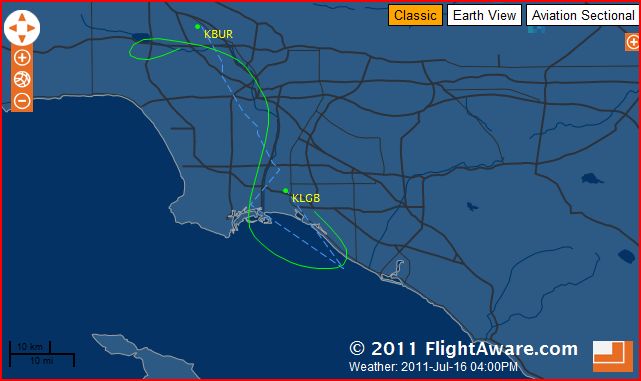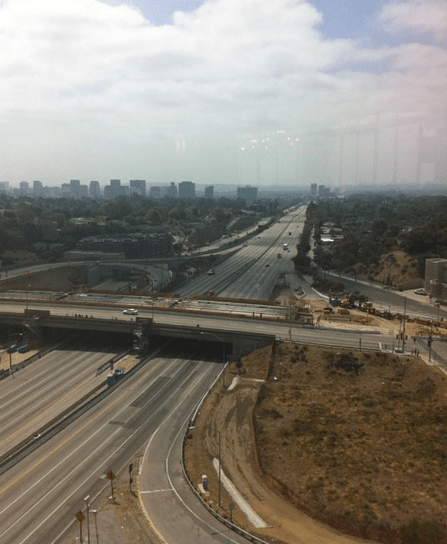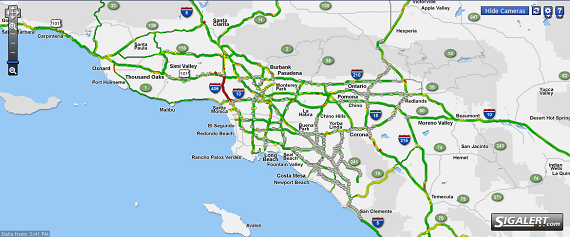
There are two theories to transportation engineering and traffic. One theory is that traffic is like a raging river. If you block it in one place, it will flow someplace else. If you add more space for it to flow, it will flow more smoothly. This theory has dominated traffic and transportation plans for years.
This theory got kicked in the shins over the last weekend.
The other theory is that people make choices based on what they believe makes the most sense at the time. Under that theory, if you spend a disproportionate amount of resources building and expanding highways, people will drive, even for short trips that could easily be completed on bike or foot.
If you believe the first theory, this weekend's temporary closure of the I-405, "the most driven highway in the country," should have been a disaster. There should have been drivers everywhere stuck on surface streets and gridlock should have clogged up all the freeways as people used their high-tech Waze application to "Beat Carmageddon" by exercising their God-given right to drive wherever they want to. If you believe the second, then everything should have been fine.
The sad thing is, most transportation planners, especially ones working in Greater Los Angeles, still seem to believe the first theory. After all, while the city and surrounding area benefitted tremendously from the closure of the 405, the reason the project was closed was so that they could expand the freeway, creating another pipe to flush our car traffic through.
Despite all the warnings, media induced panic, apocryphal visions and ABC 7's constant messaging that we needed to "fight back" by downloading a phone application to help you drive somewhere else; Angelenos made the smart choices this weekend. In fact, most people seemed to think this was a great weekend, even better and more relaxing than the usual two-day break. Reporters interviewed more people extolling the virtues of the day and talk about how great the city was with less cars mucking up the system.

On Saturday morning, I took a bike ride to Culver City with my son and my Mom and we commented how it was one of the more pleasant rides we had had on surface streets (without a police escort.) One Fox L.A. anchor joked that after the re-opening of the 405 "we can all go back to being miserable."
Of course, I was home in time to watch the now legendary flight v bike (v Metro v in-line skater) race that took place. If you're not one of the 20,000 people that visited L.A. Streetsblog this weekend, you can catchup on the story here, here and here.

While the warnings of the upcoming Apocalypse were everywhere, the Wolfpack Hustle, Gary Kavanagh, Ezra Horne, Joe Anthony and Jet Blue Airlines gave Angelenos something fun to do on Saturday. Never have so many watched a "race" on twitter and a webpage with a GPS map. Thousands were entertained, a city's spirits were raised, and cycling in Los Angeles was portrayed in a positive light. Did the Carmageddon sub-plot of this race have anything to do with Angelenos leaving their cars at home for the weekend? We'll never know; but more than anyone else this unlikely team were the heroes of the weekend.
The silver medal for the weekend has to go to the p.r. team at Metro for doing a masterful job of getting the word out about the closure. They used every media trick in the book, both old and new, and there was pretty much nobody in the area that didn't know what was happening. Whether you thought the coverage was overblown or not, this p.r. team did a great job this weekend and the months leading up to Carmageddon.
The big losers have to be the local media. From ABC 7's bizarre campaign encouraging people to download a phone application to "beat" a highway closure and drive wherever they wanted, to their celebratory "We Beat Carmageddon!" coverage on Sunday; it was hard to tell if I was watching local news or the Colbert Report. Check that, Colbert's coverage was actually restrained comparatively.
It was particularly painful to watch the evening news on Saturday when every station had a team of reporters spread out throughout the city to tell the same story: that nothing was happening. Some stations, including one that was specifically warned not to buy into the hype, didn't have a "Plan B" and didn't report on any news besides Carmageddon...and there was nothing happening. The news about the early re-opening of the 405 didn't come until much later.
While many of the people that appeared on the news were asking when we can do this again, the answer is easy. People can have a Carmageddon every day that they don't get in a car. Ride a bike, clean the yard, walk to the park, everyday provides a new chance to forget the car and do something else. When enough people do that, the crippling congestion which has grabbed the hearts and psyches of too many people vanishes.
So when's the next Carmageddon? There's no time like the present. And you don't need politicians or the media to tell you it's time, just the desire to be car-light and the beautiful Southern California weather.







